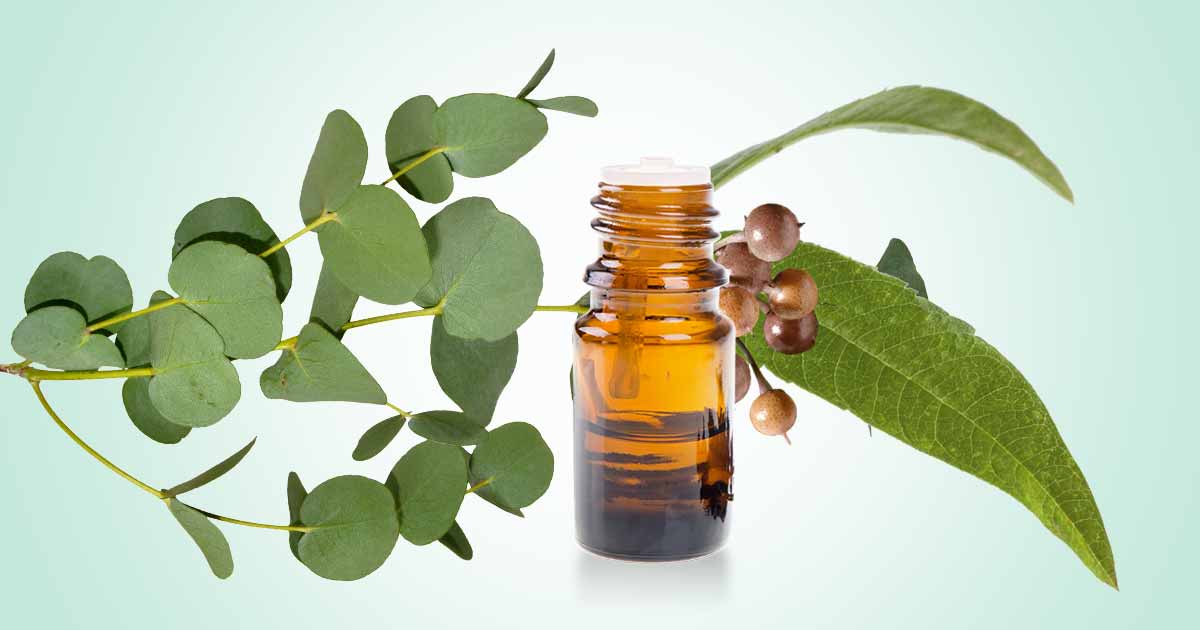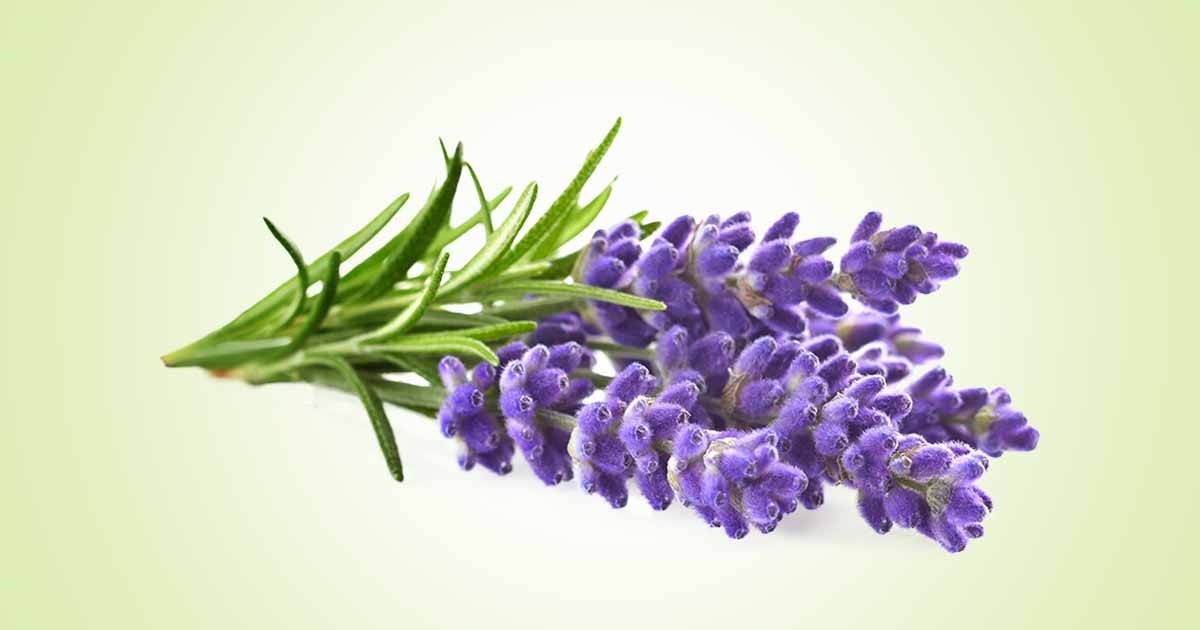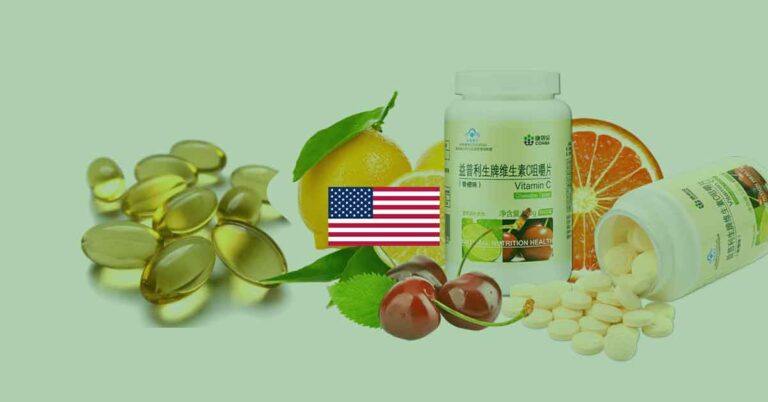Eucalyptus oil is the main constituents of the tall evergreen tree called, blue gum tree, stringy bark tree or Eucalyptus globulus (the most popular species). The plant is from the family, Myrtaceae. The name eucalyptus comes from the Greek word, eucalyptos, which means well-covered (“Eu,” means “true,” and “calyptus,” means “to cover”). This is because the flower buds are enclosed with a cup-like membrane, which throws off as the flowers expand.
Though Eucalyptus globulus is the most important species in the Eucalyptus genus, other medicinal species include Eucalyptus bentahmii, Eucalyptus leucoxylon, Eucalyptus camaldulensis, Eucalyptus sideroxylon, E. smithii, E. polybractea, eucalyptus pulverulenta, Eucalyptus bicostata, Eucalyptus radiata, Eucalyptus grandis, Eucalyptus cineria, and Eucalyptus Tereticornis. There are over 700 species in the Eucalyptus genus.
Eucalyptus is native to Tasmania and Australia, but now has more than 700 species. E. globulus is the main varieties that yield the cineol (or eucalyptol). Other species yield varying quantity of the oil and other chemicals used in perfumery. The essential oils could be medicinal oils (eucalyptol, as called cineol), industrial oils (terpenes), or aromatic oils, such as E. citriodora, possessing good aroma.
Since a German botanist and director of the botanical gardens in Melbourne introduced the plant outside Australia, it has been grown in many countries such as Egypt, Algeria, Spain, South Africa, India, and Southern California.
The eucalyptus tree can grow from 30 to 200 feet (60.96 m), with the tallest eucalyptus tree, the Mountain Ash, reaching over 301 feet (91.74 m). Most species exist as both mature and juvenile leaves. The leaves of the juvenile stage are opposite, sessile, oval to roundish, and glaucous, while the mature stage are petiolate, pendulous, and lanceolate, often stiff, thick, highly coriaceous, and cutinized.
The flowers in bud are covered with a cup-like membrane, but is thrown off as a lid as the flower expands. The fruit is surrounded by a woody, cup shaped receptacle and has many minute seeds.
The bark of the plant could be smooth or rough, deciduous or persistent, with different colors, fiber length, thickness, hardness, and furrowing. Every year, after the death of the outermost bark, eucalyptus plants add another layer. E. globulus is unique as their bark cells can photosynthesize even without the presence of foliage.
In traditional medicine, the oil and leaves are used for bronchitis, and smoked to treat asthma. The oil cools the body from fever, and to treat skin problems, aching joints, and bacterial infections.
Now, it is formulated as sprays, lozenges, cough drops, ointments, or with other oils.
Composition
The essential oils of eucalyptus are mostly extracted from the leaves, and less from the stem, fruits, and flowers. The essential oils include natural volatile bioactive compounds, especially the sesquiterpenoids, monoterpenoids, phenylpropanoids.
Eucalyptol (1,8-cineole, cineole), a monoterpene is the most important volatile constituent found in the eucalyptus plant leaves and twigs, and is about than 70% (v/v) of the total oil. Eucalyptus is the most significant source of cineole. Other major constituents are limonene and α-terpineol.
The monoterpenes include p-cymene, α-pinene, d-limonene, β-pinene, piperitone, α-Phellandrene. Other constituents include macrocarpals (phloroglucinol-sesquiterpenes), eucalyptin, alkaloids, terpenoid phenolaldehydes, tannins, verbenone, 2′6′-dihydroxy-3′-methyl-4′- methoxy-dihydrochalcone, phenols, oleanolic acid, flavonoids (8-desmethyl-eucalyptin, 6,8- dimethylkaempferol-3,7-dimethyl ether).
The leaves and shoot of the plant also contain other volatile constituents such as aromadendrene, α- gurjunene, globulol, ß-pinene, pipertone, α-, ß-and γ-terpinen-4-ol, and allo-aromadendrene.
Formic acid, dextrin, and sucrose are obtained from the flowers and honey.
The fruit contains borneol, caproic acid, citral, eudesmol, fenchone, p-menthane, myrecene, myrtenol, α-terpineol, verbinone, asparagine, cysteine, glycine, glutamic acid, ornithine and threonine.
Health Benefits of Eucalyptus Oil
Eucalyptus oil has antioxidant, anti-inflammatory, analgesic, anti-microbial, anti-diabetic, anti-viral, anti-nociceptive, CNS simulant, pulmonary decongestant, antispasmodic, anti-cancer effects.
It has been used to treat infection, wound, asthma, chronic obstructive pulmonary disease, bronchitis, sinusitis, pain, cancer, malaria.
The oil is also used in food industry, perfumery, aromatherapy, phytotherapy, cosmetics, detergents, and soap making. Other industrial uses include as herbicide, insecticide, and mosquitocides.
The eucalyptus preparations are available as intranasal sprays, gels, transdermal, and topical preparations.
Treat respiratory conditions such as sinusitis and bronchitis:
Essential oils from E. citriodora inhibit S. aureus and β-lactamase-producing strains, microorganisms that may cause sinusitis, an inflammation of one or more of the paranasal sinuses.
Essential oils of E. globulus inhibited H. influenzae, Haemophilus parainfluenzae, and Stenotrophomonas maltophilia but did not inhibit S. pneumoniae, Streptococcus agalactiae, and Klebsiella pneumoniae. The oil can be used ad adjuvant in treating sinusitis by reducing drug resistance.
In bronchitis, a condition where there is inflammation of the lining of the tubes (bronchi) transporting air in and out of lungs, 1,8-cineole has both bronchodilating and anti-inflammatory effect.
It beat frequency of the cilias in the mucous membrane, reduced mucin content in BALF (bronchoalveolar lavage fluid) and MUC5ac expression in the trachea and bronchiole epithelium.
Preparations of eucalyptus in the forms of lozenges, syrups, vapour baths, and rubs are used to treat cough and common colds, and as a decongestant. The fresh leaves in gargles can soothe sore throats and treat bronchitis and sinusitis.
Eucalyptus oil loosen phlegm. The steam from the oil is used to treat bronchitis, coughs, and the flu.
Dental health:
Plaque bacteria like Streptococcus mutans and Streptococcus sobrinus colonize the tooth surface and cause dental caries. Other bacteria such as Porphyromonas gingivalis, Actinobacillus actinomycetemcomitans, and Fusobacterium nucleatum are implicated in dental decay.
Eucalyptus oil prevent biofilm formation. The eucalyptus oil contains cineol, an antibacterial agent that destroys the organisms which cause bad breath.
It is used with other oils such as myrrh oils, and peppermint in dental products like chewing gums, mouthwashes, toothpastes, for dental plaque and gingivitis.
Anticancer effect:
Essential oils of eucalyptus has antitumor, antiproliferative, and cytotoxic effects.
Taheri et al., 2020 reported that the E. camaldulensis essential oils inhibit colorectal cancer cell line Caco-2, by both antioxidant and induction of apoptosis. Also, euglobal-G1 from leaves of E. grandis inhibit two-stage skin carcinogenesis and pulmonary tumorigenesis.
Eucalyptus robusta leaf inhibit colon, lung, neuroblastoma, glioblastoma, pancreatic cancer, and ovarian cancer cell lines. E. globulus essential oils inhibit colon cancer cells, while the leaves of Eucalyptus torquata and E. sideroxylon is cytotoxic against human breast adenocarcinoma cell line.
Antidiabetic effect:
Eucalyptol reduces blood glucose to normal. It also decreased lipid peroxidation, liver proteins content, TBARS (thiobarbituric acid reactive substances) level, and increased the antioxidant activity.
Sugimoto et al., 2005 reported that E. globulus leaf extract reduces adiposity, plasma, and hepatic triacylglycerol, and inhibited intestinal fructose absorption in rats induced by high sucrose diet.
E. tereticornis extracts increased glucose uptake in insulin-resistant C2C12 cells and inhibited glucose production in insulin-resistant HepG2 cells (Guillén et al., 2015). It reduced the mRNA levels of all the cytokines (MCP-1, TNF-α, IL-1, and IL-6) and decreased the proinflammatory state of adipose tissue in diabetic mice. E. camaldulensis inhibits α-glucosidase and α-amylase via non-competitive inhibition.
Analgesic effect:
Owemidu et al., 2020, reported that E. globulus essential oils reduced pain perception in the male Swiss albino mice model by L-Type voltage-gated calcium channel. Also, Mondal et al., 2021 reported that E. camaldulensis produce anti-nociceptive effect by its affinity towards anti-inflammatory receptors (COX-2, TNFα, and IL-1β convertase), and central analgesic effect by interactions with μ opioid receptors.
Inhalation of eucalyptus oil decreased pain and blood pressure after surgery, while eucalyptus-based ointment (Eucalyptamint) relieves minor muscle soreness.
Wound healing:
In traditional medicine, the Aborigines make a poultice out of the wound and apply on affected areas to relieve joint pain, heal cuts, skin conditions, wounds, and infections.
Velmurugan et al., 2014 reported that the extracts of E. citriodora, caused an increase in wound contraction and decreased epithelization in the scarred area in Wister albino rats. It restored the normal architecture of the collagen and reticulin. There is also significant increase in skin breaking strength, and increase in the dry granulation tissue weight.
It could be helpful in minor cuts and chronic wounds.
Treatment of Asthma and COPD:
Eucalyptus oil (1,8-cineole) has anti-inflammatory activity by inhibiting the pathways of arachidonic acid metabolism. It suppressed the cytokine production in lymphocytes (TNFα, IL-1β, IL-4, IL-5) and monocytes (TNFα, IL1β, IL6, IL8).
Eucalyptol is expectorant and will reduce exacerbations in chronic obstructive pulmonary disease (COPD) patients. The eucalyptol reduces inflammation and oxidative stress, by increasing antioxidant enzymes like superoxide dismutase (SOD), catalase.
Treatment of anxiety:
Oxidative damage to the neurotransmitter system can increase the chances of developing anxiety, a condition where there are low levels of Gamma-amino butyric acid (GABA) in the CNS.
E. tereticornis has anti-anxiolytic activity due to its antioxidant and GABA agonistic activity. Inhalation of 1,8-cineole lowers both systolic blood pressure and anxiety.
Blood pressure lowering:
1,8-cineole lowered aortic pressure and minimized Ca2+ influx through calcium channels in cardiac muscle in a rat model (Lahlou et al., 2002; Soares et al., 2005). Moon et al., 2013 reported that cineole inhibited lipid peroxidation, reduced cell damage and corticosterone levels, elevated nitric acid concentrations, and may reduce Angiotensin II concentrations.
Treat Lice infections:
Compounds that suffocate the ectoparasite such as malathion, pyrethrins, permethrin, and essential oils such as eucalyptus oil are used to treat lice infection.
As a nasal decongestant:
Constituents such as medicinal eucalyptus oil, peppermint oil, and tea tree oil has both mucolytic and decongestant activity. They are used with steam inhaler to treat common cold, sinusitis, inflammation.
Internally, it is used as inhalations, lozenges, and pastilles and applied topically as ointments and liniments.
Antibacterial activity:
There are constituents with antibacterial activities such as 1,8-cineole, citronellol, limonene, citronellal, α-terpinol, p-cymene, citronellyl acetate eucamalol, linalool, β-pinene, γ-terpinene, aromadendrene, and alloocimene (Nezhad et al., 2009).
Bachir and Benali, 2012, reported that the oils inhibit S. aureus and Escherichia coli, two bacteria that can cause toxic shock syndrome. Other antibacterial compounds include tannins and saponins.
The oil is hydrophobic and increase cell permeability and the constituents to leak out.
Antiviral effect:
E. sideroxylon leaves extract contains phloroglucinols, cypellocarpines, and flavonoids, compounds with antiviral effect against HSV-II (herpes simplex virus 2). E. camaldulensis inhibited HSV-1, HSV-2, and VZV (Varicella-Zoster Virus). E. globulus has Tereticornate A, a compound that inhibits HSV – I, and another compound Cypellocarpin C which has antiviral activity against HSV – II.
Management of gastric ulcers:
Gastrointestinal disorders such as duodenal ulcers and gastric ulcers are caused by gram-negative bacillus, Helicobacter pylori. The leaves extracts of eucalyptus are used to treat GIT disorders.
Adeniyi et al., 2009 reported that the E. camaldulensis and E. torelliana extracts inhibited H. pylori strains. Also, Matthews Jucá et al., 2011, also reported that E. torelliana extracts accelerates GIT transit by the contrasting effects induced by α- and β-pinene on gastrointestinal smooth muscle. This effect increases gastric emptying rate.
Treatment of Alzheimer’s disease:
Neuroinflammation is a key problem in Alzheimer’s disease, a condition where there are insoluble amyloid beta deposits and neurofibrillary tangles in the human brain. Cineole significant suppressed TNFα, and reduced the expression of inflammatory COX-2, NOS-2, NFκB, and ChAT.
Immune response:
Eucalyptus oil has anti-inflammatory effect and also stimulates phagocytosis and clearance of mycobacteria pathogens in lung macrophages. At certain doses, the oil increased CD8, which helps to fight inflammation and improve immune cell memory.
Nakamura et al., 2020 reported that the essential oil reduces allergic reactions and suppress mast cell degranulation by downregulating IgE-FcεRI signaling. Hence, it can be effective in acute dermatitis.
Larvicidal activity:
The essential oils of eucalyptus is larvicidal against Culex quinquefasciatus and Culex tritaeniorhynchus.
Antiseptic effect:
Eucalyptus oil is a powerful antiseptic when it is old, as ozone is formed on exposure to air. It has disinfectant activity. The antiseptic properties also confer some antimalarial action, but cannot replace Cinchona.
Hookworm treatment:
Eucalyptus-chloroform combination was used to treat hookworm, but has been abandoned as it is not an effective anthelmintic. Chenopodium Oil is now used.
Dosage
Eucalyptus oil must be diluted, and the full strength form should not be used. In arthritis, a 5-20% in an oil-based formulation or 5-10% in an alcohol-based formulation could be used. 1 teaspoon in boiling water for steam inhalation is used in nasal congestion.
Do not take pure eucalyptus oil by mouth. A dosage of only 3.5 mL (less than one teaspoon) of the pure oil can be fatal.
Pregnancy and breast-feeding:There is fewer data on the effect of eucalyptus oil in pregnancy and breastfeeding.
Contraindication
Do not give eucalyptus oil to children or people who are allergic to ingredients with fevertree, gum tree, red ironbark, or white ironbark. In infants and children, it van cause seizures and other nervous system side effects.
Drug Interactions
Eucalyptus may interact with:
- Enhance the absorption of 5-Fluorouracil (5-FU ) a medication used to treat cancer.
- It may increase the elimination of pentobarbital, a barbiturate used as an anesthetic, and amphetamine, a stimulant used to treat narcolepsy and attention deficit hyperactivity disorder.
Toxicity and Side Effects
Though eucalyptus oil is highly utilised, it can be toxic when ingested. The effects which have rapid onset of action include burning sensation in the mouth and throat, abdominal pain, and spontaneous vomiting, do not induce emesis.
Central nervous system effects include giddiness, ataxia, and disorientation followed by loss of consciousness, in 10–15 min. Convulsions are rare in adult but common in children. In adults an oral dose of 30 ml is lethal, and even low doses (4 to 5 ml)
Canada has warned against the use of Triaminic Vapour Patch, which contains camphor, eucalyptus oil, and menthol, especially when ingested by children. It can cause minor effects such as mouth burning, headache, nausea, and vomiting, to dangerous reactions such as seizure.
Management of the Toxicity.
There is no specific antidote, but supportive and symptomatic management. Since there is risk of aspiration following vomiting and CNS depression.
The use of activated charcoal is controversial as the eucalyptus oil spreads thoughout the body and the charcoal hardly helps.
Do not give any amount of eucalyptus oil orally as it can be fatal in low doses.
References
- https://www.sciencedirect.com/science/article/pii/S2667031321000713#bib0095
- https://www.herbalgram.org/resources/healthy-ingredients/eucalyptus/
- https://www.ncbi.nlm.nih.gov/pmc/articles/PMC4721170/
- https://www.rxlist.com/eucalyptus/generic-drug.htm
- https://www.mountsinai.org/health-library/herb/eucalyptus
- https://www.florajournal.com/archives/2018/vol6issue6/PartB/7-3-4-710.pdf
- https://www.botanical.com/botanical/mgmh/e/eucaly14.html
- https://www.stlukes-stl.com/health-content/medicine/33/000896.htm
- https://www.researchgate.net/publication/307869709_Beneficial_and_Healthy_Properties_of_Eucalyptus_Plants_A_Great_Potential_Use












